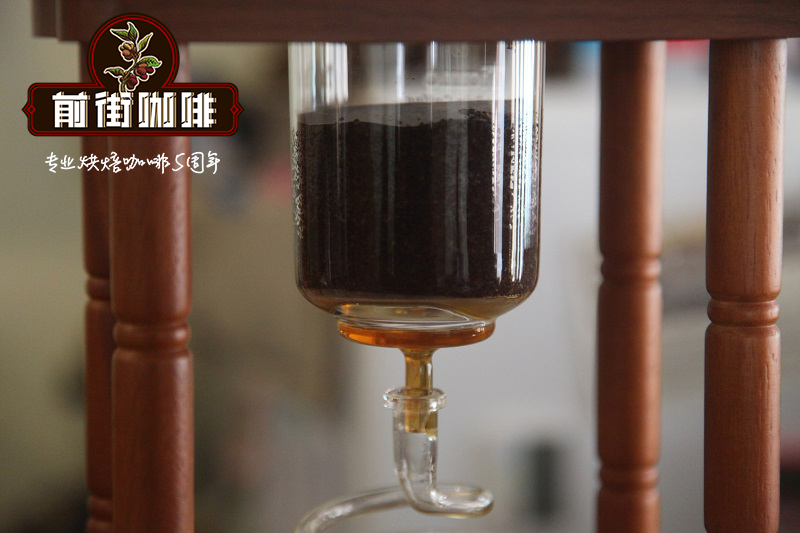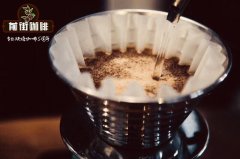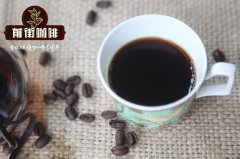Ecuador Vicabamba longevity village coffee production area profile What flavor characteristics taste

Professional coffee knowledge exchange more coffee bean information please follow the coffee workshop (Wechat official account cafe_style)
Everyone wants to live a long life, and according to the International Institute for Longevity Studies, there must be more than 75 centenarians per million people in order for the area to meet the standards of longevity areas.
The five world longevity villages identified by the International Natural Medicine Association are Caucasus of the old Soviet Union, Hunza of Pakistan, Vikabamba of Ecuador, Hetian of Xinjiang of China and Bama of Guangxi.
Interestingly, only Vilcabamba in Ecuador is located in the Western Hemisphere, so it is also known as the longevity hometown of the Western Hemisphere. since 1970, a group of Western scientists have been stationed to study the reasons for the longevity of the residents of the region, and of all the longevity villages in the world, only Ecuador (Vilcabamba) grows coffee!
What is the mystery of Ecuadorian coffee grown in longevity village? At present, although there is no direct evidence to prove that drinking is of great help to prolong life, in order to maintain the local ecology and continue to study the crops in Changshou Village, the German government has commissioned a German organization to buy all the coffee beans produced in Changshou Village.
Vilcabamba, a longevity village located in the plateau clouds of the Andes south of Ecuador, is pronounced in Inca Quechua: Vilcabamba, which means sacred tribe "Holy Valley". Because the villagers live a long life, scientists and doctors have been trying to unravel this secret for centuries. According to the local government, there are about 5000 villagers, of whom more than 20 are over 100 years old. Some of these old people grow and handle coffee by hand. The local people like to eat beans, corn, bananas, sweet potatoes, rice, and mango scientists believe that the local drinking spring water has a high mineral content, in which the proportion of iron and magnesium is ideal.
Some experts believe that the water quality of the two rivers from Vilcabamba and Chamba in Changshou Village is effective, and the average annual temperature in the village is very comfortable between 18 and 22 ℃, and the elevation of 1500 meters is very comfortable without hot or cold winter, which belongs to the subtropical climate zone; and the unique Hilo plants in this region have incredible effect on air cleaning, which should be one of the secrets of longevity.
These high-quality Ecuadorian coffee planted on the alpine slopes of Changshou Village use the magical river water of Changshou Village to treat these coffee fruits, and do not rely on machines or chemicals. Coffee in Changshou Village is still a traditional and hand-grown ancient industry, and the German government allocates a budget and sends experts to help grow it every year in order to maintain this tradition. GTZ (Society for Technical Cooperation/ Gesellschaft f ü r Technische Zusammenarbeit), on behalf of the German government, ensures that Vilcabamba coffee farmers continue to provide this quality product, funding and purchasing these longevity coffees. The harvest season is from June to October every year, because the coffee ripens slowly in the alpine sun, so the aroma and flavor of the coffee are very attractive to some customers in Europe, while the ripe coffee fruits are manually peeled and peeled by a simple machine. then use the traditional water washing fermentation method, and then slowly dry in the alpine sun, need to manually turn and select every day.
In the picture below, you can see that the appearance of the sack is a happy old man, jumping and whistling while walking. In fact, there are several elderly people over 90 years old in this village. Every day, the greatest pleasure is to drink two cups of coffee after work. They go to the coffee farm at home almost every day to help do something. An old gentleman said in an interview with GTZ: my greatest pleasure is to have a cup of coffee and chat with the kids in the neighborhood. The coffee grown in this secret longevity village belongs to Typica. Although the output is not much, the flavor is like the river water here, very sweet, and the aftertaste lasts for a long time. The longevity coffee produced by Changshou village is worth a try.
Basic information on Ecuadorian coffee
Country: Ecuador
Producing area: Vikabamba (Vilcabamba)
Grade: mountain grown
Variety: Typica
Harvest time: harvest at the end of October 2005, delivery in July 2006
Treatment: traditional washing method, natural sun after fermentation
Appearance / disadvantages: green, 0d/350g
Ecuadorian coffee cup taste test is as follows: M0 + roasting degree, baking time 12 minutes
Dry aroma: fruit aroma, sweet litchi, sweet spices, green apple, blackcurrant, direct and deep nose aroma, essential oil aroma
Wet fragrance: sour berries, sour citrus grapefruit, sweet and sour oil, sweet caramel, honey tea
Sipping: heavy and slippery grease, sour berries, grapefruit, sour cream, sweet caramel, pea-like micro-flowers and essential oils in East Africa, sour and sweet grapefruit after swallowing, like fresh fresh-cut grapefruit with honey, quite special.
Important Notice :
前街咖啡 FrontStreet Coffee has moved to new addredd:
FrontStreet Coffee Address: 315,Donghua East Road,GuangZhou
Tel:020 38364473
- Prev

Introduction to the coffee beans and flavor characteristics of Galapagos Alcatraz coffee beans in Ecuador
Professional coffee knowledge exchange more coffee bean information please follow the coffee workshop (Wechat official account cafe_style) Ecuadorian coffee coffee: Ecuador is an island country in South America, coffee cultivation has a long history, about the beginning of the 19th century, Ecuador coffee compared to bananas, oil, shrimp and so on was never listed as a major source of income, but there are enough mountains on the island.
- Next

How much water to brew espresso coffee and mocha coffee powder water ratio introduction
Professional coffee knowledge exchange More coffee bean information Please pay attention to coffee workshop (Weixin Official Accounts cafe_style) I. Brief description of hand-brewed coffee utensils: 1. "Slimmer": Slimmer can effectively control the size and stability of the water column (including whether the stability of the water column continues to be good when the water level drops)
Related
- Detailed explanation of Jadeite planting Land in Panamanian Jadeite Manor introduction to the grading system of Jadeite competitive bidding, Red bid, Green bid and Rose Summer
- Story of Coffee planting in Brenka region of Costa Rica Stonehenge Manor anaerobic heavy honey treatment of flavor mouth
- What's on the barrel of Blue Mountain Coffee beans?
- Can American coffee also pull flowers? How to use hot American style to pull out a good-looking pattern?
- Can you make a cold extract with coffee beans? What is the right proportion for cold-extracted coffee formula?
- Indonesian PWN Gold Mandrine Coffee Origin Features Flavor How to Chong? Mandolin coffee is American.
- A brief introduction to the flavor characteristics of Brazilian yellow bourbon coffee beans
- What is the effect of different water quality on the flavor of cold-extracted coffee? What kind of water is best for brewing coffee?
- Why do you think of Rose Summer whenever you mention Panamanian coffee?
- Introduction to the characteristics of authentic blue mountain coffee bean producing areas? What is the CIB Coffee Authority in Jamaica?

